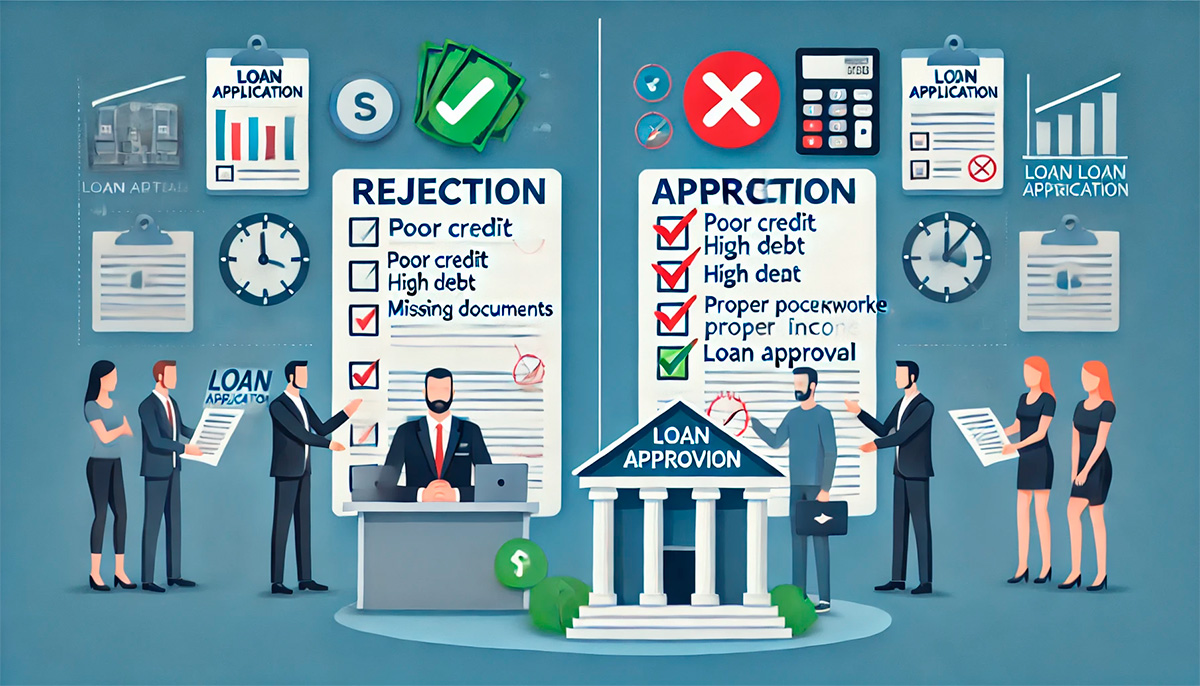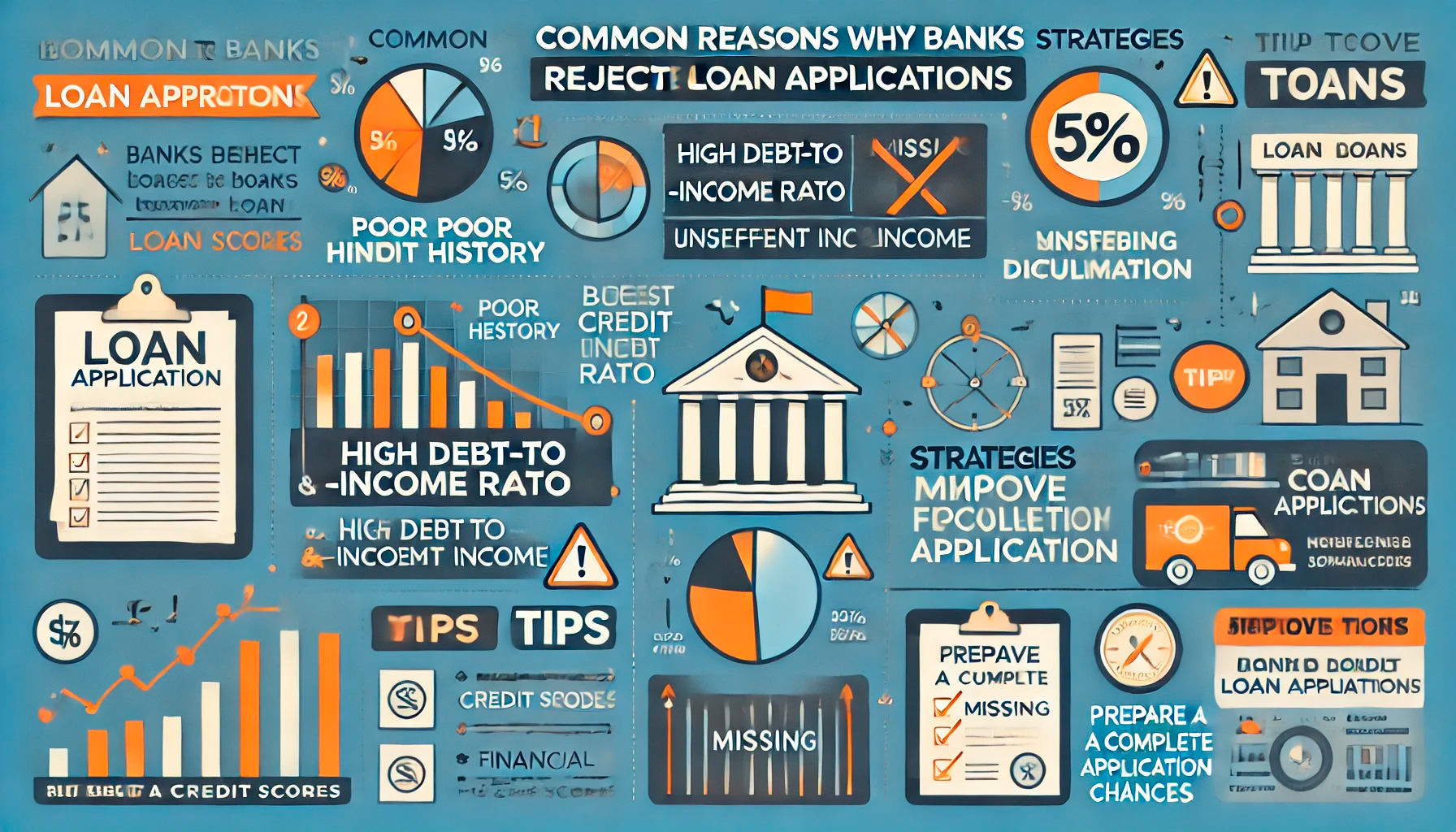In the labyrinth of financial decisions, few moments are as disheartening as receiving a loan rejection letter from your bank. It feels like a door slamming shut, leaving you stranded in a corridor of uncertainty. But what if I told you that this door isn’t locked forever? Understanding why banks reject loan applications and learning how to improve your chances can turn that closed door into an open gateway to financial success.
Banks, much like cautious gardeners, are selective about where they plant their seeds. They assess risk meticulously, ensuring that every loan they approve has the highest likelihood of blooming into a fruitful return. But what exactly makes them say “no”? And more importantly, how can you cultivate your financial garden to make it irresistible to these cautious cultivators?
The Anatomy of a Loan Rejection
To comprehend why banks reject loan applications, we must first delve into the criteria they use to evaluate potential borrowers. These criteria are not arbitrary; they are rooted in years of financial analysis and risk assessment. Here are the most common reasons for loan rejections:
- Poor Credit History: Your credit score is the financial equivalent of a report card. It tells banks how well you’ve managed your debts in the past. A low score can be a red flag, signaling that you might struggle to repay the loan.
- Insufficient Income: Banks need to be confident that you have a steady income stream to meet your monthly repayments. If your income is too low or irregular, they may deem you a high-risk borrower.
- High Debt-to-Income Ratio: Even if you have a good income, existing debts can eat into your ability to repay a new loan. A high debt-to-income ratio can make banks wary of adding more to your plate.
- Incomplete or Inaccurate Application: Sometimes, the devil is in the details. Missing information or errors in your application can lead to an automatic rejection.
- Lack of Collateral: For secured loans, collateral acts as a safety net for the bank. If you don’t have sufficient assets to back the loan, your application might be turned down.
- Unstable Employment History: Job-hopping or frequent gaps in employment can make banks question your financial stability.
Understanding these reasons is the first step toward improving your chances. But knowledge alone is not enough; action is required. Let’s explore how you can turn the tide in your favor.

How to Improve Your Chances of Loan Approval
Improving your chances of loan approval is akin to preparing for a marathon. It requires discipline, planning, and a clear strategy. Here are some actionable steps you can take to enhance your loan application:
- Boost Your Credit Score: Your credit score is a critical factor in loan approval. Pay your bills on time, reduce outstanding debts, and avoid applying for new credit unnecessarily. Over time, these actions will help improve your score.
- Increase Your Income: While this may sound easier said than done, finding ways to boost your income can significantly improve your loan prospects. Consider taking on a side gig, freelancing, or asking for a raise at work.
- Lower Your Debt-to-Income Ratio: Pay down existing debts before applying for a new loan. This will not only improve your debt-to-income ratio but also demonstrate financial responsibility to lenders.
- Prepare a Detailed Application: Ensure that your loan application is complete and accurate. Double-check all the information and provide any additional documents that might strengthen your case.
- Offer Collateral: If possible, offer collateral to secure the loan. This reduces the bank’s risk and increases your chances of approval.
- Stabilize Your Employment: If you’re planning to apply for a loan, try to maintain a stable job for at least six months to a year. This will reassure banks of your financial stability.
By taking these steps, you can present yourself as a low-risk borrower, making it much harder for banks to say no.

The Role of Communication in Loan Approval
While financial metrics are crucial, the human element should not be overlooked. Effective communication with your bank can sometimes make all the difference. Here’s how you can leverage communication to improve your chances:
- Be Transparent: Honesty is the best policy. If you have any financial blemishes, be upfront about them. Explain the circumstances and how you’ve worked to improve your situation.
- Build a Relationship: Establishing a good relationship with your bank can work in your favor. Regular interactions and a history of responsible banking can make lenders more inclined to approve your application.
- Seek Professional Advice: If you’re unsure about any aspect of your loan application, consider seeking advice from a financial advisor. They can provide valuable insights and help you present a stronger case.
Remember, banks are not just lending money; they’re investing in you. The more confidence they have in your ability to repay, the more likely they are to approve your loan.
Conclusion: Turning Rejection into Opportunity
Receiving a loan rejection can feel like a setback, but it’s also an opportunity for growth. By understanding why banks reject loan applications and taking proactive steps to improve your financial health, you can turn that rejection into an approval. It’s a journey that requires patience, discipline, and a willingness to learn, but the rewards are well worth the effort.
So, the next time you find yourself staring at a rejection letter, don’t despair. Instead, see it as a roadmap to financial improvement. With the right approach, you can transform your financial landscape and open the door to new opportunities. After all, every “no” brings you one step closer to a “yes.”

